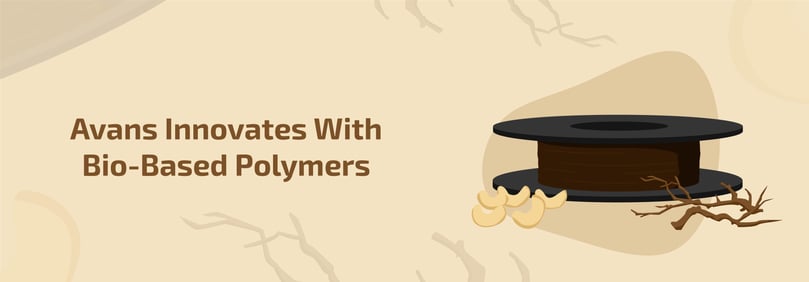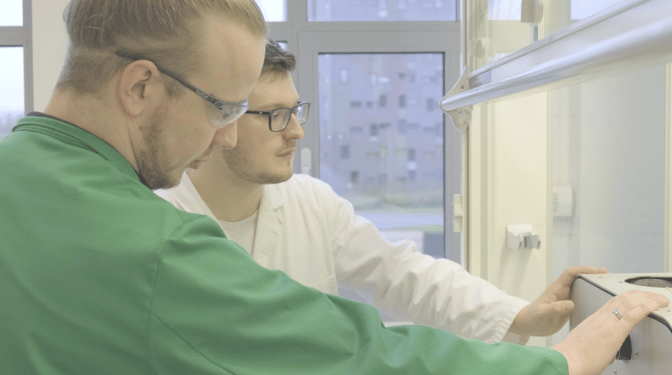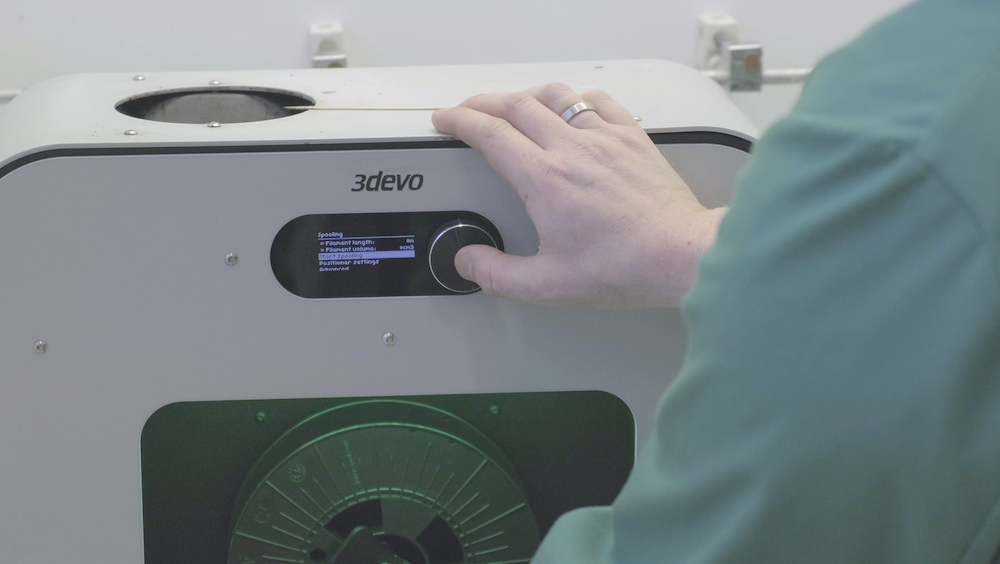Share this
How Biopolymers Bridge the Gap between Research and Education
by 3devo on Feb 10, 2022 10:06:00 AM

At Avans University of Applied Sciences, filament extrusion isn’t just a way to get polymers ready for 3D printing. It’s also a technology for developing and testing never-before-seen materials for innovative, eco-conscious uses.
Besides of being one of the top universities of applied sciences in the Netherlands, Avans also carries out applied research. We recently connected with Dennis Molendijk, a researcher at the Center of Expertise for Bio-Based Economy (CoE BBE), a state-of-the-art applied research center at Avans. CoE BBE explores the potential of bio-based materials for the transition to a bio circular economy.
Dennis divides his time between teaching and research at CoE BBE. He is involved in the research group, Bio-based Building Blocks and Products, which deals with novel biorefining processes to extract monomers, polymers, and compounds from bio-based sources. The group also supervises student projects in the field of bio-based chemistry. The group has lab facilities at its disposal which are equipped with state of the art equipment for material research and training. However, the research has started to pose a few challenges.
How Small Scale Became More for the Avans Team
The research that the research team conducts involves reactive extrusion, handling of fine particles like biocarbons, and the highest of quality standards for compounding different materials. Since research normally needs a lot of trials and usually works with small quantities the equipment should be suited for handling small amounts of materials. Also for the teaching side, too, small scale equipment saves time, money and waste produced.
Dennis sums it up: “research and education needs a small scale solution for processing small amounts of polymeric materials – one that can behave the way we want it to, fit inside our fume hoods and be cost-effective for teaching purposes. It is better to have multiple devices than one big one, since we teach 20 students at a time.”
"Research and education needs a small scale solution for processing small amounts of polymeric materials – one that can behave the way we want it to, fit inside our fume hoods and be cost-effective for teaching purposes. It’s better to have multiple devices than one big one, since we teach 20 students at a time.” – Dennis Molendijk, Avans University

A Ringside View of ”Small Scale Extrusion"
With the need for a compact extruder identified, Dennis and his team proceeded to get the 3devo Composer 450 filament maker for their Biobased lab. They had soon conducted successful experiments to combine small quantities of PLA with fine biocarbons extracted from wastes like cashew shells and roadside grass. To assess the properties and capabilities of this biocarbon-strengthened PLA, it was also used to 3D print some components.
As far as teaching goes, students have been undertaking a variety of projects to create and test small batches of polymers and starch-based compounds. Project timelines have shortened and things are quite efficient. For instance, they have managed to eliminate the 24-hour wait that would earlier be required for the newly extruded filament to dry.
“Earlier we had to do a lot of planning for the bigger extruders. Now with the two Composers, the students can easily come up to me and use them right away, so we can do it without extensive planning and still run the same experiments. It makes things a bit more flexible.” Dennis shares.
This is not to say that the entire journey has been smooth. The teaching side of things is always a challenge. Some of the “extreme extrusion” projects by the students have even tested the limits of the machines! However, every step gets them closer to understanding the polymers and the bio-additions in more depth and detail, which is the purpose of the entire exercise
The CoE BBE researchers at Avans are currently involved in a number of potentially groundbreaking projects. These range from crafting innovative bio-based materials for agricultural uses, to harnessing specific properties of different polymers through cutting-edge methods. Now that they’ve brought more accessibility, flexibility and speed into their work process, we’re sure of receiving exciting new updates from Avans University of Applied Sciences on a regular basis!
Learn more about the use of filaments in research by reading our case study from Lapland University by clicking the button below:
Share this
- November 2025 (1)
- October 2025 (1)
- March 2025 (1)
- January 2025 (1)
- December 2024 (2)
- November 2024 (2)
- October 2024 (4)
- September 2024 (2)
- August 2024 (3)
- July 2024 (6)
- June 2024 (3)
- May 2024 (2)
- April 2024 (1)
- March 2024 (1)
- January 2024 (1)
- November 2023 (2)
- October 2023 (5)
- September 2023 (2)
- August 2023 (1)
- July 2023 (1)
- May 2023 (1)
- December 2022 (2)
- June 2022 (1)
- May 2022 (2)
- April 2022 (2)
- March 2022 (6)
- February 2022 (2)
- January 2022 (3)
- December 2021 (3)
- November 2021 (3)
- October 2021 (2)
- September 2021 (3)
- August 2021 (3)
- July 2021 (2)
- June 2021 (1)
- March 2021 (1)
- October 2020 (1)
- June 2020 (1)
- May 2020 (1)
- April 2020 (4)
- November 2019 (1)
- July 2019 (2)
- June 2019 (1)
- May 2019 (1)
- March 2019 (1)
- November 2018 (1)
- September 2018 (1)
- January 2018 (1)
- October 2017 (1)
- September 2017 (1)
- July 2017 (1)
- June 2017 (1)
- May 2017 (1)
- January 2017 (1)
- December 2016 (3)
- November 2016 (2)
- October 2016 (1)
- May 2016 (2)
- August 2015 (2)
- July 2015 (1)

